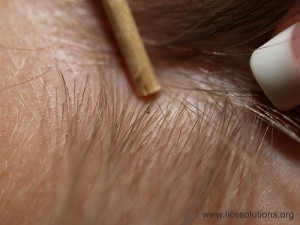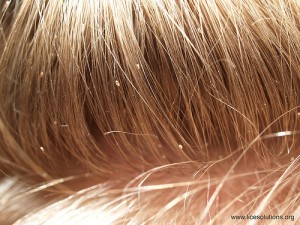In the United States, infestation with head lice is most common among preschool and elementary school-age children and their household members and caretakers. Head lice is not a health hazard, does not signify poor hygiene, and does not cause disease. However, head lice often causes much scalp itching for the patient. Getting head lice is not related to cleanliness of the person or his or her environment.
Head lice crawl, but can’t jump or fly. Lice survive for only 1 day off the scalp. Head lice are not known to transmit disease. The most common way to get head lice is by head-to-head contact with a person who already has head lice. Such contact can be common among children during play at:
- school,
- home,
- other gatherings (e.g., sports activities, playgrounds, camp, and slumber parties).
Uncommonly, transmission may occur by:
- wearing clothing, such as hats, scarves, coats, sports uniforms, or hair ribbons worn by an infested person;
- using infested combs, brushes or towels; or
- lying on a bed, couch, pillow, carpet, or stuffed animal that has recently been in contact with an infested person.
Diagnosis
Misdiagnosis of head lice infestation is common. The diagnosis of head lice infestation is best made by finding a live nymph or adult louse on the scalp or hair of a person. Because adult and nymph lice are very small, move quickly, and avoid light, they may be difficult to find. Use of a fine-toothed louse comb may facilitate identification of live lice.
If crawling lice are not seen, finding nits attached firmly within ¼ inch of the base of hair shafts suggests, but does not confirm, the person is infested. Nits frequently are seen on hair behind the ears and near the back of the neck. Nits that are attached more than ¼ inch from the base of the hair shaft are almost always dead. Head lice and nits can be visible with the naked eye, although use of a magnifying lens may be necessary to find crawling lice or to identify a developing nymph inside a viable nit. Nits are often confused with other particles found in hair such as dandruff, hair spray droplets, and dirt particles.
Head Lice:  Nits:
Nits: 
If no nymphs or adults are seen, and the only nits found are more than ¼ inch from the scalp, then the infestation is probably old and no longer active — and does not need to be treated.
Symptoms
Head lice infestations can be asymptomatic, particularly with a first infestation or when an infestation is light. Itching (“pruritus”) is the most common symptom of head lice infestation and is caused by an allergic reaction to louse bites. It may take 4-6 weeks for itching to appear the first time a person has head lice.
Other symptoms may include:
- a tickling feeling or a sensation of something moving in the hair;
- irritability and sleeplessness; and
- sores on the head caused by scratching. These sores caused by scratching can sometimes become infected with bacteria normally found on a person’s skin.
Treatment
We suggest the following approach to head lice:
- Only treat a child with live lice or eggs.
- 1% permethrin (Nix) and pyrethrins (Rid) over-the-counter are the first line treatment for active infection. Two treatments are usually required at proper intervals according to the product directions.
- Manual removal of lices/nits (wet combing), although time-consuming, is an alternative to topical treatment, but requires close surveillance and repeat efforts weekly for at least three weeks. The Nit Free Terminator comb is recommended and available at local pharmacies. This Removing Head Lice video will be helpful.
- Other treatments are available by prescription and will require a visit with the doctor to verify the need.
The Consumer Reports suggests comb and smother as first line treatment.
Advice on prevention can be found on our page, Head Lice Prevention.
The American Academy of Pediatrics (AAP) issued an update on Head Lice in 2015.
* For more information on head lice and its treatment, visit this CDC webpage on Head Lice.